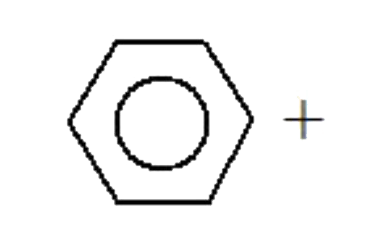CH3−CH2−CH2−CHCl2NaNH2−−−−→Δ Major product is :
CH3C≡C−CH3
CH3−CH2−C≡CH
CH2=CH−CH=CH2
CH3−CH2−CH=CH2
To solve the problem, we need to analyze the reaction of the compound CH3−CH2−CH2−CHCl2 (1,1,2,2-tetrachbutane) with sodium amide (NaNH2) under heat. Here’s a step-by-step breakdown of the process:
Step 1: Identify the Structure
The compound is CH3−CH2−CH2−CHCl2. It can be visualized as:
- A straight-chain alkane with four carbon atoms.
- Two chlorine atoms attached to the last carbon.
Step 2: React with Sodium Amide
When NaNH2 is introduced, it acts as a strong base. The NH−2 ion will deprotonate the hydrogen atoms adjacent to the carbon atoms bonded to chlorine.
Step 3: Deprotonation and Elimination
- The NH−2 ion will extract two hydrogen atoms from the adjacent carbon atoms (the ones that are not attached to chlorine).
- Simultaneously, the chlorine atoms will leave as chloride ions (Cl−).
Step 4: Formation of Alkyne
This process will lead to the formation of a triple bond between the remaining carbon atoms. The final structure will be:
- CH3−CH2−C≡C (butyne).
Step 5: Write the Final Reaction
The overall reaction can be summarized as:
CH3−CH2−CH2−CHCl2+2NaNH2Δ−→CH3−CH2−C≡C+2NaCl+2NH3
Final Product
The major product formed is CH3−CH2−C≡C (butyne).
Summary
Thus, the major product of the reaction is butyne.
---
The compound is CH3−CH2−CH2−CHCl2. It can be visualized as:
- A straight-chain alkane with four carbon atoms.
- Two chlorine atoms attached to the last carbon.
When NaNH2 is introduced, it acts as a strong base. The NH−2 ion will deprotonate the hydrogen atoms adjacent to the carbon atoms bonded to chlorine.
- The NH−2 ion will extract two hydrogen atoms from the adjacent carbon atoms (the ones that are not attached to chlorine).
- Simultaneously, the chlorine atoms will leave as chloride ions (Cl−).
This process will lead to the formation of a triple bond between the remaining carbon atoms. The final structure will be:
- CH3−CH2−C≡C (butyne).
The overall reaction can be summarized as:
CH3−CH2−CH2−CHCl2+2NaNH2Δ−→CH3−CH2−C≡C+2NaCl+2NH3
The major product formed is CH3−CH2−C≡C (butyne).
Thus, the major product of the reaction is butyne.
Topper's Solved these Questions
Similar Questions
Knowledge Check
- Question 1 - Select One
CH3−CH=CH−CH2−CO2H−−→Δ(X)(major), Product (X) is :
ACH3−CH=CH−CH3BCH3−C∣CH3=CH2CCH3−CH2−CH=CH2DCH3−CH=CH2 - Question 2 - Select One
CH3−CH2−CH2−CH2−CH3∣C∣CH3−CH2−OHH+−−→ΔA(major) product (A) is :
ACH3−CH2−CH2−CH2−CH2−C∣CH3=CH−CH3B CCH3−CH2−CH2−CH2−C∣CH3=CH2DCH3−CH2−CH∣CH3−CH2−CH3∣C−CH2
CCH3−CH2−CH2−CH2−C∣CH3=CH2DCH3−CH2−CH∣CH3−CH2−CH3∣C−CH2 - Question 3 - Select One
CH3CH2C≡CHNaNH2−−−−−→liq. NH3I

Product (K) of the above reaction is :A B
B C
C D
D
CH3−CH2−CH2−CH2−C∣ClH2alc. KOH−−−−→Δ Major product is :
View Solution
 + CH3−CH2−CH2−CH2−ClAlCl3−−→ Hydrocarbon (X) major product X is View Solution
+ CH3−CH2−CH2−CH2−ClAlCl3−−→ Hydrocarbon (X) major product X is View SolutionCH3CH=CH2H/H2O−−−−→ major product is
View SolutionPh−CH=N−CH3+Ph−CH2MgClH2O−−→ major product :
View SolutionCH3CH2−O∣∣C−CH3NaNO2−−−−→HCl, Major product of this reaction is :
View Solution

